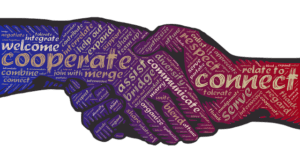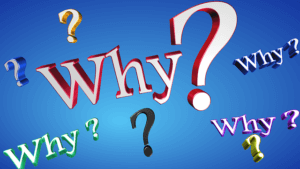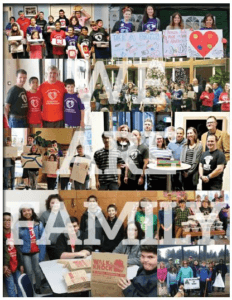Autism Facts Quick Start
New visitor? Please check out “Understanding Autism, A Few Quick Notes.”
This Autism Quick-Start section is meant to provide a quick introduction to basic autism facts written in conversational language.
Autism is a Developmental Disability:
Autism is considered a developmental disability and neurological difference that includes a broad range of symptoms. For purposes of this page and throughout the website, we use “autism” to represent all ranges of the spectrum including Autism and previously diagnosed conditions, Asperger syndrome and Pervasive Developmental Disorder Not Otherwise Specified (PDD/NOS).
Not everyone in the autism or autistic community sees autism as a “disorder” or wants that word used. Although in early years on our website you may have seen the terms “autism spectrum disorder” or ASD, we are phasing that out and you will now be seeing that much less frequently. Because it is still referred to that way in medical journals and research, there will be occasional references that way on the website when we want to keep in context or refer to a research paper or journal. At Autism Empowerment, our personal preference is to say “Autism” or “Autism spectrum” or “Autistic”.
From 1999 through 2013, through the usage of the American Psychiatric Association’s Diagnostic and Statistical Manual, Fourth Edition aka DSM-IV, patients could be diagnosed with four separate disorders: autistic disorder, Asperger syndrome, childhood disintegrative disorder, or the catch-all diagnosis of PDD/NOS.
When the 5th version of the Diagnostic and Statistical Manual (DSM-5) was released in May 2013, autism spectrum disorder became the umbrella diagnosis. Anyone diagnosed with one of the four pervasive developmental disorders (PDD) from the DSM-IV should still meet the criteria for ASD in DSM-5, however terms like Asperger syndrome and PDD/NOS were removed.
In some areas, people are still given an Asperger diagnosis by clinicians who do not use the DSM-5. (This may be problematic if trying to obtain support services in locations that require a specific diagnostic coding.) Many people initially diagnosed under the DSM-IV still use the term and identify with the Asperger or “Aspie” phenotype. Use of this term has declined in the 2020s, particularly for autistic adults regularly engaged in autism and autistic communities.
With autism being on a spectrum, intelligence level (and how it is measured and interpreted) varies widely. Some autistic individuals have intellectual disabilities. Others may have an average, higher than average, or genius level of intelligence. It is possible to be verbal, mostly nonverbal or nonspeaking, and to still have a high level of intelligence so competence should be presumed when meeting someone for the first time.
Autistic people often have difficulty with social interactions, which might include engaging in social conversations, maintaining eye contact, and intuitively understanding typical social norms. They may experience delays in processing before being able to give a verbal response. They may not want to engage on the phone, preferring text or email. They may do well in in-depth conversations about a particular passion but have challenges making social chit-chat.
Here are some common characteristics. Not all may be apparent in each individual.
- Social Impairments – Autistic youth and adults often have difficulty with social interaction. It may appear that they do not want to interact with others. Sometimes, it may be that they don’t know how to initiate connecting with a friend or starting a conversation with a peer. Sometimes, it may tie in with other parts of their personality where they prefer taking time alone and are overwhelmed in crowded situations like being on a noisy playground or making small talk at a neighborhood gathering.
- Communication Impairments – Youth and adults on the autism spectrum may have difficulty communicating their wants, needs, and emotions. They may be able to speak or use an alternative means of communication such as sign language, picture exchange, letterboarding, or a voice output device. They may take what you say literally or not catch onto social cues or slang unless they have memorized a social script or pattern study for what something means. If you tell an autistic person that something is a “piece of cake,” he or she may visualize a dessert and wonder what you mean rather than understanding or having memorized that it means something is easy to do. Some autistic youth and adults have trouble understanding jokes, idioms, puns, or sarcasm. Others use sarcasm and jokes regularly and have a wonderfully dry sense of humor.
- Sensory Perception and Unusual Behavior – People on the autism spectrum often have atypical sensory perceptions. They may have challenges with balance and posture. They may have difficulty being aware of what is going on inside of their body, like the regulation of their body temperature or not recognizing hunger or thirst. They may be more or less sensitive to the ordinary sights, sounds, smells, tastes and touches of everyday life and this will often change over time. To make matters more challenging the same person may seek large quantities of certain types of sensory input but then want to avoid other types of input altogether. Too much input feels like an assault on the senses and may lead to sensory overload. To try and regulate themselves or to block out what is bothering them, they may participate in self-stimulating or self-regulating behavior that seems outside of what is typical (e.g., rocking, flapping, humming, spinning, perseverating on a topic.) They may also participate in self-stimulating behavior as a way of expressing emotion.
Accept and Respect the Individual:

Autism is one aspect of an individual’s character. With or without autism, every person is an individual with his or her own preferences, strengths, gifts and limitations. There is a popular saying in the autism community attributed to Autistic advocate, Dr. Stephen Shore, “If you’ve met one person with autism, you’ve met one person with autism.” Alternatively, for those who prefer identity-first language, “If you’ve met one autistic person, you’ve met one autistic person.”
You may think you know what autism “looks like” or “sounds like” but you may be surprised to find out that some people with autism are chatty and others are quiet. Some are introverted, some are extroverted. Some autistic people enjoy hugs, handshakes and public affection while others do not. Some may act out and do things we don’t understand. At these times, show respect and courtesy.
Causes:

There are many ideas about the cause(s) of Autism. Most researchers think that genetic factors with possible environmental triggers cause autism spectrum differences. Different people’s symptoms may have different causes or initial triggers, however correlation often does not equal causation. Autism presents differently from person to person. Statistics and research studies may be interpreted differently depending on who is sponsoring or writing about a study.
Historically, very few autistic adults have the opportunity to take a meaningful part in autistic research and when they do, it is usually as a consumer or peer reviewer. As a rule, it is recommended to think critically when analyzing any material and to use your best judgment when applying it toward your individual situation.
Treatments:
Autism presents differently from person to person and as such, no one-size-fits-all treatment exists. The symptoms or characteristics of autism can severely limit an individual’s ability to function in everyday life. Thus, early diagnosis and appropriate intervention is important. Teaching must be individualized and delivered in a motivating, respectful and consistent manner that respects and works with autistic neurology. Evidence-based practices and educational interventions are known to be effective in helping children and adults learn, however it is important to research each treatment and clinician carefully.
More information about treatment options here.
Supporting Individuals & Families:

Individuals and families impacted by autism need acceptance, respect, support and meaningful opportunities to enrich and empower their lives. They need to have hope. Many find it helpful to connect with others who have experienced similar circumstances. It helps them feel less isolated when they know they’re not going through something alone. Individuals and families may be under tremendous stress and need all of the grace and nonjudgmental help they can get from friends, extended family, educators, service providers, and nonprofit organizations like Autism Empowerment. Coordinated and consistent help also can make a positive difference in the life of a family affected by autism.
At Autism Empowerment, we know that autism is a journey. The journey for an autistic youth will look different than that of an autistic adult. The journey of an autistic parent will look different than that of a parent who is not autistic. Here, we aim to serve all ages, all ranges of ability, and all cross-sections of culture. As an autistic-led organization that partners with allistic (not autistic) youth, adults, and community allies, we’re here to meet you along the way through our programs and services, like our nonprofit publications, Spectrum Life Magazine and Zoom Autism Magazine.

